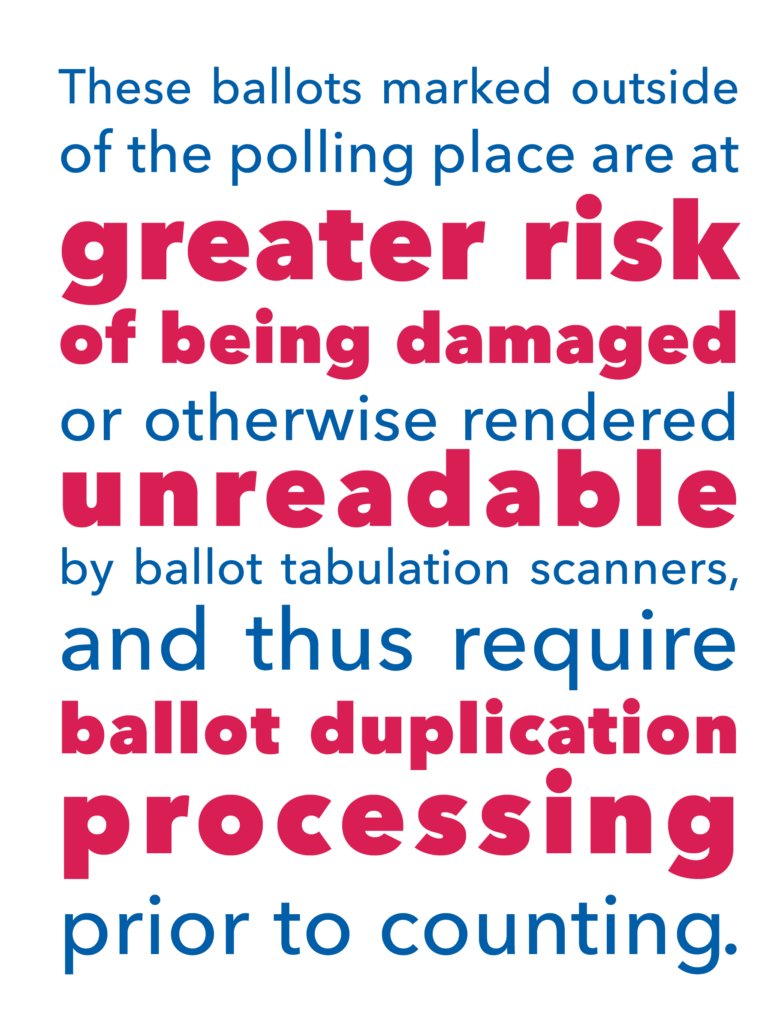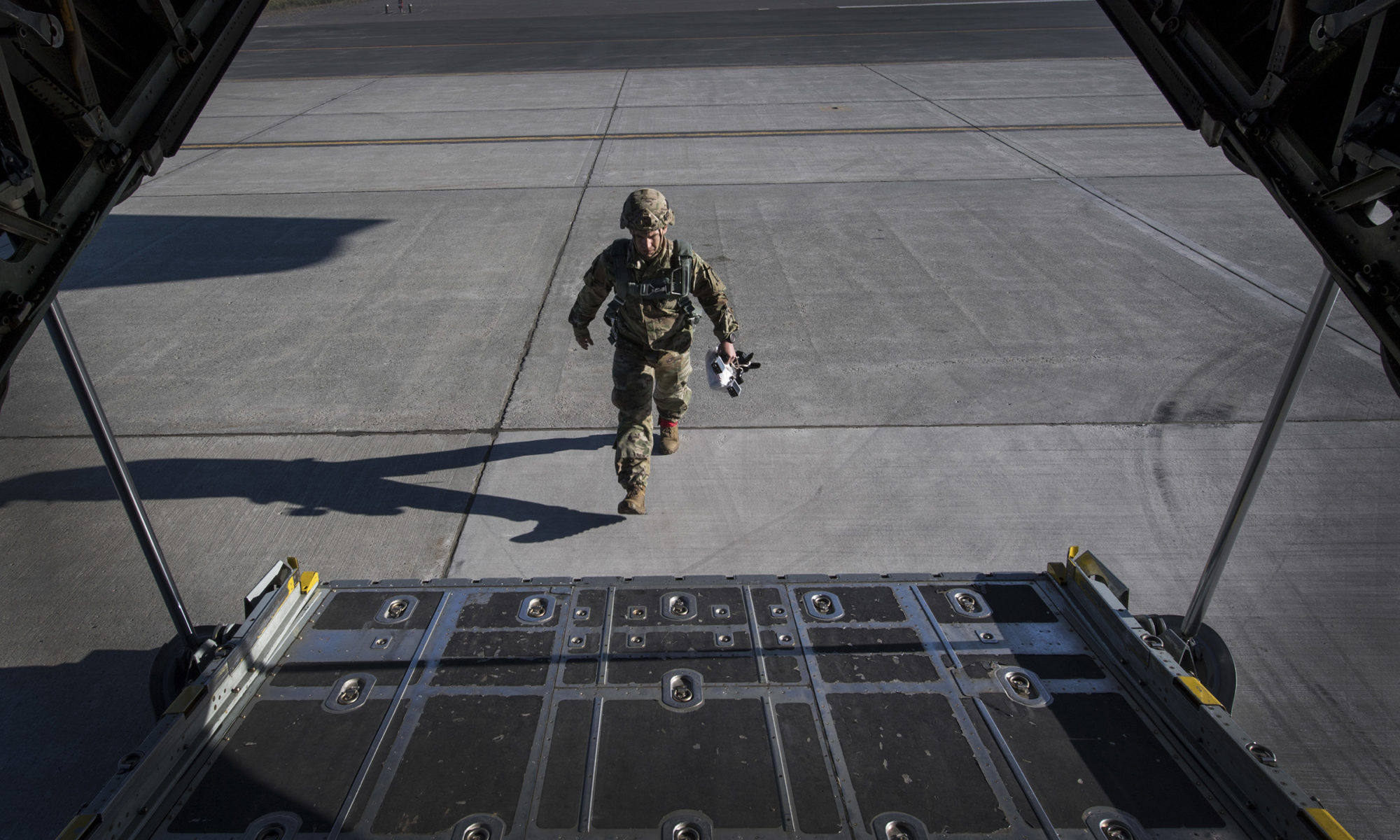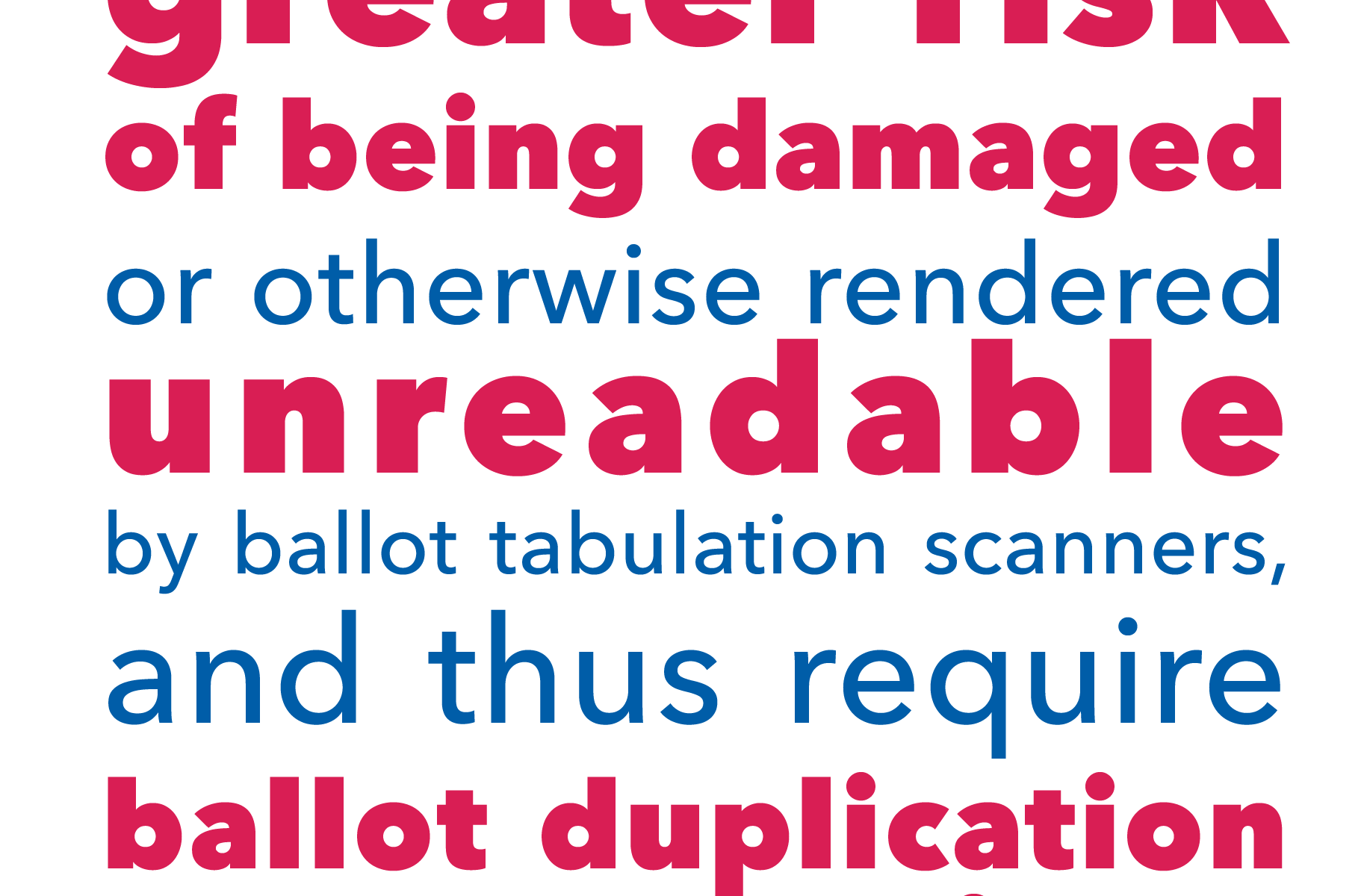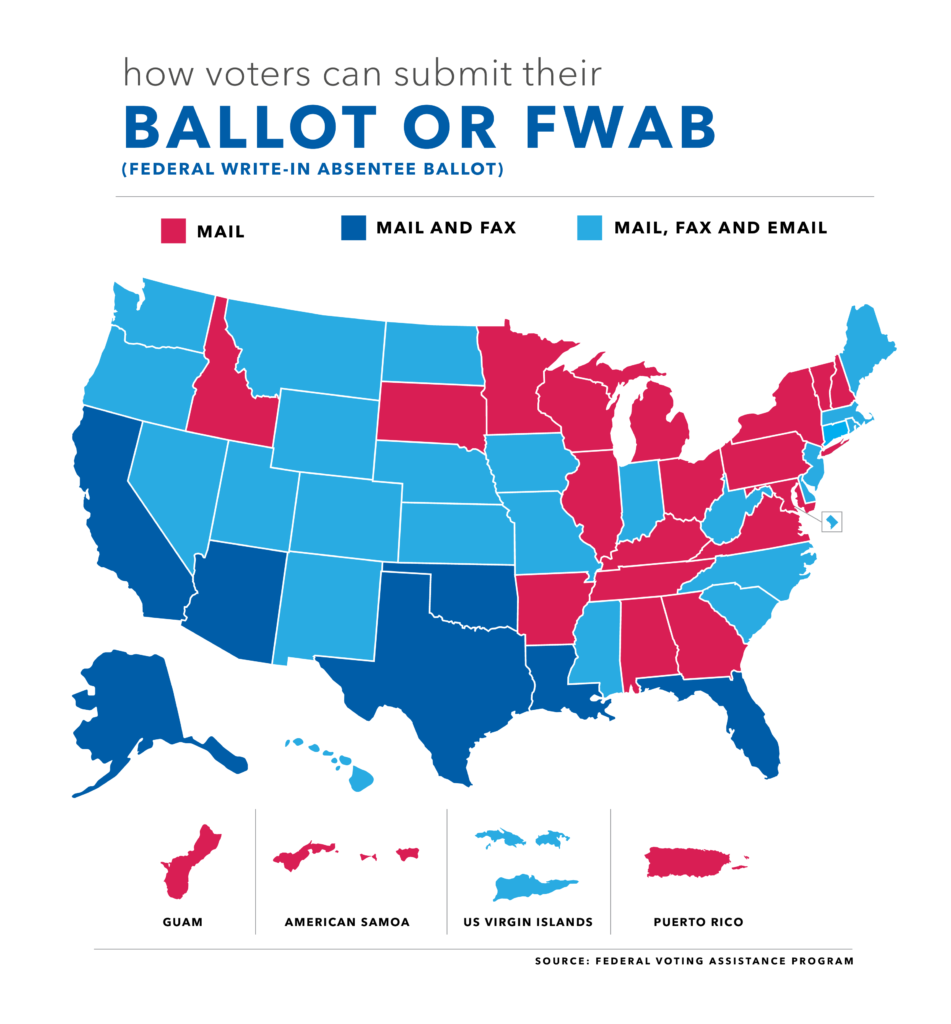A presidential election draws significantly more voters than a midterm or local election, resulting in more ballots to count. With expanded for vote-by-mail and no-excuse absentee voting, due to the COVID-19 pandemic, a significant increase in the number of ballots marked outside of the tightly controlled environment of a physical polling place.

These ballots marked outside of the polling place are at greater risk of being damaged or otherwise rendered unreadable by ballot tabulation scanners, and thus require ballot duplication processing prior to counting.
OVI’s research focuses on supporting continuous improvement of the military and overseas voting process, much of this work has broader applications to general election administration.
Duplication of damaged or otherwise machine-unreadable ballots is an example of this cross-over. the processes and technologies used to transcribe damaged or unreadable military and overseas ballots are the same ones employed to transcribe all ballots delivered remotely to voters no matter the method of return.
We’re sharing answers to common questions about ballot duplication in the form of a Frequently Asked Questions document or FAQ. This document will be available as a downloadable PDF that election officials and other election community stakeholders can use to share with their constituents, as needed, to explain this process.
For election officials who would like an editable copy of this FAQ to customize with jurisdictional information, please contact [email protected].
Frequently Asked Questions (and Answers)
- What is ballot duplication?
- Ballot duplication is the process for replacing a damaged or improperly marked ballot (meaning the ballot tabulation scanner cannot read the ballot) with a new ballot that preserves the voter’s intent and can be counted. Two specific actions are performed during the duplication of a damaged or machine-unreadable ballot: 1) The interpretation of the ballot style — an elections official determines the version of a ballot within a jurisdiction that an individual voter is eligible to vote. 2) The voter’s marked responses to those specific ballot style choices are preserved onto a new tabulation-ready ballot.
- Is ballot duplication new in 2020?
- Ballot duplication is a common practice that has been used by election officials for the last several decades as electronic ballot tabulation has come into use.
- If ballot duplication is not new, then why are we talking about it in 2020?
- Due to the COVID-19 pandemic, some states and local jurisdictions have moved to a by-mail or ballot drop-off voting process, either eliminating or reducing in-person voting at a polling place. Others have expanded their absentee voting programs. As a result, local election officials nationwide may receive higher volumes of ballots in the mail, or otherwise cast remotely that may require transcription so these ballots can be read by tabulation equipment and counted. Therefore, it is safe to say that more remote voting will result in more ballots duplication processes to count these ballots.
- Why are ballots duplicated?
- A ballot is duplicated, or transcribed, when it becomes damaged during its life cycle or is otherwise unable to be read – and therefore counted – by a ballot tabulation scanner.
- Does the need for ballot duplication only apply to paper-based ballots or can electronic ballots become damaged or machine unreadable as well? If so, how?
- Electronic ballots can become damaged or unable to be read and counted by ballot tabulation scanners. This typically happens when voters covered by UOCAVA – or voters in states that allow the option for electronic ballot delivery to other voters – have requested a ballot electronically and the electronic ballot is printed by the voter. Ballots printed by voters are typically not on paper that is the same weight or size as the paper ballot a voter would receive in person at a local polling place. Additionally, some voters either reduce or enlarge the ballot prior to printing or do not print to the correct orientation (portrait or landscape) with these actions reducing image quality and rendering ballots unreadable by tabulation equipment.
- How do some ballots become “damaged” during the voting process? What are the common causes of “damaged” or machine unreadable ballots?
- Ballots can be damaged during the life cycle of a ballot. Anything from coffee spills to wrinkles and tears can interfere with a ballot being scanned by a tabulation system. Ballots filled out with inappropriate marking implements — pencils, highlighters, colored pens, chalk, cosmetic pencils, paints, crayons and colored art pencils — cannot be processed by a tabulation system. The voter’s intent may be clear under a state’s election laws but marked in a way that a tabulation system cannot read. For example, the voter may mark the ballot inappropriately, by circling a candidate’s name when instructions indicate a bubble must be filled in. Additionally, stray marks on the ballot can interfere with the tabulation system’s ability to scan the ballot.
- How are ballots duplicated?
- According to the U.S. Election Assistance Commission (EAC), ballot duplication is the process for replacing damaged or improperly marked ballots (i.e., the voting system cannot read the ballot) with a new ballot that preserves the voter’s intent. The ballot duplication process create a “clean ballot” with the voter’s choices that can be read by ballot tabulation equipment. Ballots are duplicated or transcribed either manually or with the assistance of ballot duplication technology solutions, but the process is essentially the same.
- What happens to the original ballot when a ballot is duplicated or transcribed?
- The ballot duplication process ensures that the original voter-marked ballot is retained for the record including any required auditing. It is the duplicated or transcribed “clean ballot,” and not the damaged one, that is counted by tabulation equipment.
- Do all election jurisdictions use ballot duplication?
- States and territories have their own election laws that dictate rules and procedures for any post-election processing of damaged or machine unreadable ballots.
- There are other terms out there such as Ballot Transcription, Ballot Replication, and Remaking Ballots. Are these different processes or other just names for Ballot Duplication?
- Ballot duplication is a term well known to and commonly used by election officials throughout the U.S. This long-existing term is also known as ballot replication, ballot remaking and, less commonly but perhaps most accurately, ballot transcription.
Ballot duplication is one of the many behind-the-scenes election processes that’s helpful to highlight as we approach November 3rd.
Read the other articles in our Ballot Duplication series:
Ballot Duplication: What it is, what it is not and why we are talking about it in 2020
Ballot Duplication: New Recommendations for Contingency Planning in the time of COVID-19 and Beyond
Ballot Duplication Technology: What Is It and How Does It Work?
Continued Advancement in Ballot Duplication Technology Solutions: Pilots in the Field
Contingency Planning During COVID-19: Ballot Duplication in the States



